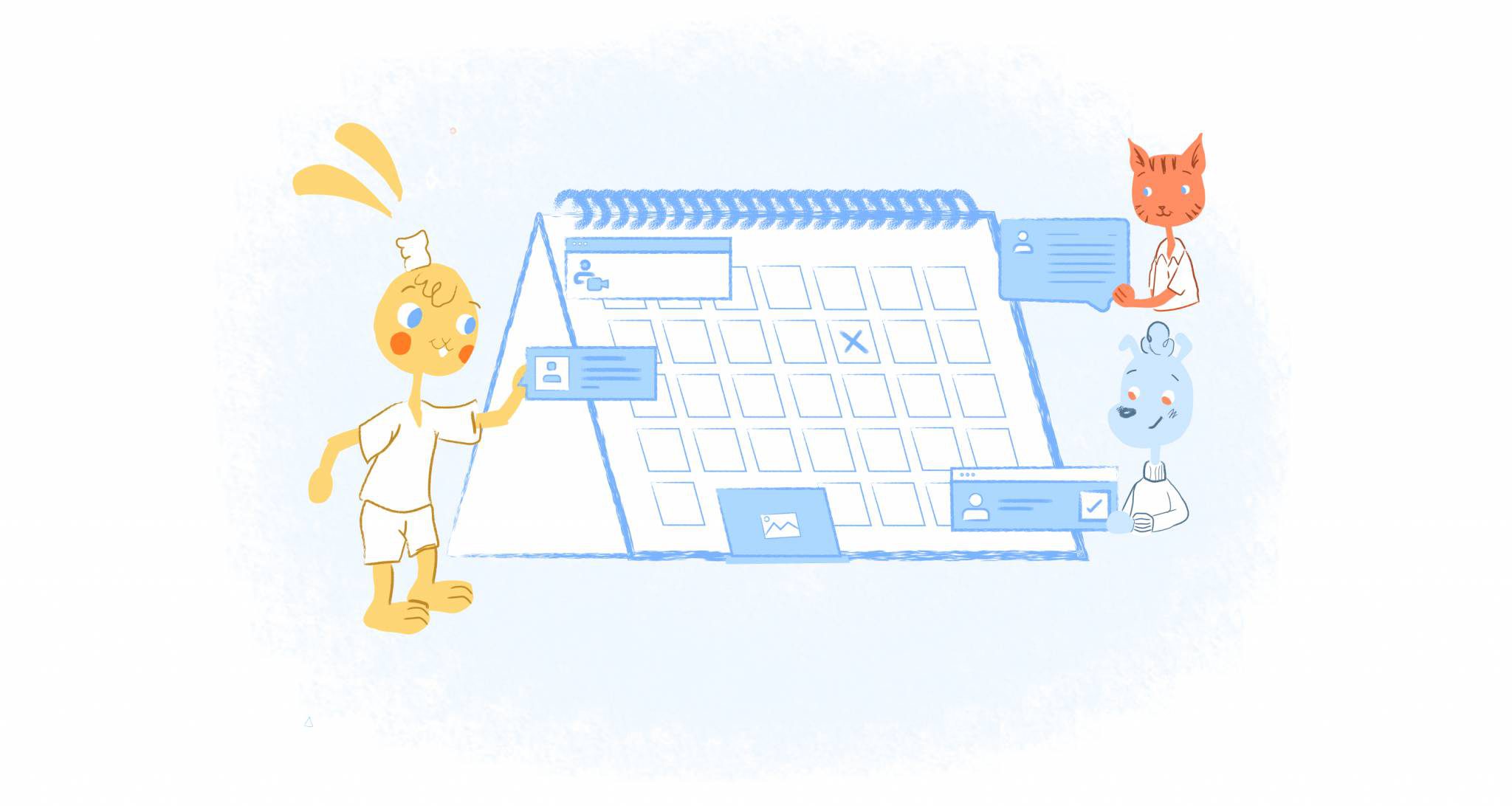

I guarantee that on any given week you’re in-and-out of several meetings. While meetings do play a very important part of being a business owner, not all meetings are created equal.
Some are informative and can steer your business in the right direction. While others just eat-up an hour of your day that you’ll never get back.
To ensure that you only have productive meetings in the future, here are the five types of meetings that you should book on your calendar.
1. Project meetings.
Project meetings bring together people from various departments who are working together on a specific task or project. For example, product development or business reorganization. Project meetings can come in the form of planning and progress meetings, brainstorming sessions, status updates or reviews.
Project meetings are meant to make sure that the task or project is progressing and address any issues. To run effective project meetings, be sure to set objectives, an agenda, only invite the right people, and keep it short.
2. Information sharing meetings.
These types of meetings include presentations, keynotes, lectures, and panel debates. The primary goal of information sharing meetings is for the speakers to share information or knowledge with the attendees. For example, a rep showcasing a new product or you informing your team about important internal changes.
It’s not uncommon for the speaker to rely on visual communication tools. This means you should block in time prior to the meeting to set-up the equipment and make sure it’s working.
The presenter keeps the audience engaged by moderating a Q&A session or asking for feedback. Like any other meeting, keep track of time and try not to go over the allotted time-frame.
3. Decision making and problem solving.
Decision-making meetings perhaps the most common type of meeting in the business world. Its simply a meeting where those invited make major business decisions, like opening a new office or hiring a new employee.
All those involved in the meeting need to be aware of what’s being discussed so that everyone reaches the right decision. As sure, the facilitator needs to define the problem and give participants ample time to process prior to the meeting.
As explained by Stever Robbins explains in the Harvard Business Review: “Never call a meeting to make a decision. Work with people one on one, and then call the meeting to let the group share and own the decision that’s been made.”
Robbins adds, “Even if you can’t make the decision airtight before the meeting, you’ll save time in the long run by having short one-on-one conversations with team members to frame the discussion.”
4. Collaborative meetings.
Collaborative meetings can come in various forms, such as an annual general meeting, board meeting, committee meeting, creditors meeting, or statutory meeting. The objective of this type of meeting is to discuss issues like supply chain improvements, project expansion, and new market ventures — to name just a few.
Collaborative meetings can also strengthen business relationship with external groups, while giving your company a better understanding of customer focus. Unlike other types of meetings where attendees are in the same room, collaborative meetings can take place in different locations since external groups are involved.
Since it can be difficult, and expensive, to ask someone located across the country to attend a meeting in-person, you can rely on virtual communication like Google Hangout, Skype, Zoom or GoToMeeting. Like information sharing meetings, block time in advance to make sure that everything is up-and-running.
Also, because so many people are involved, make sure that you share this meetings agenda with everyone. It wouldn’t hurt to share your calendar as well here.
5. Innovation and motivational meetings.
Since innovation is key to every successful organization, it just makes sense that you need to schedule this type of meeting. After all, this is where your team gets to brainstorm and exchange ideas.
To make your innovation meeting successful, take notes, follow-up with ideas, and ask everyone to participate. Like most meetings, this should be short. In fact, it’s recommended that innovation meetings run for just 30 minutes.
Similar to innovation meetings are motivational meetings, which are also sometimes referred to as team building sessions. These meetings can include discussions, games, or a motivational speakers.
This type of meeting is specifically designed to gain commitment from your team around a change effort. They’re meant to uplift the energy, boost morale, and ultimately improve productivity. They’re also important in strengthening the relationship between managers and employees since it promotes a corporate culture.
The facilitator needs to appeal to the audience both emotionally and logically. That because it’s all about the participants. As such, dialogue and making sure everyone has a good time is essential. However, you also have to be mindful of their time and stick within the timeframe.
How to Improve Your Meetings
Regardless of the meeting, each one needs to have an objective and time-frame. But, to improve your meetings going forward, Asana suggests (via Business Insider) that you should also do the following.
Impose a limit on recurring meetings.
“Avoid overbooking your weeks with meetings by adopting a ‘one in, one out’ policy.” For example, if you have three weekly meetings, “and either you or a colleague feels the need to add another one, only do so if you are willing to cut one. Determine how much time you can spend each week in meetings and set a cap.”
Designate an entire day each week to be free of meetings.
“A no-meeting day allows your team uninterrupted flow time for projects,” states Asana says. For instance, Asana has instituted a No-Meeting Wednesday policy. However, you can adapt it to specific teams depending on how you work together.
Conduct all meetings with an agenda.
Asana suggests that you assign a “meeting keeper” to set goals for the meeting and then share them with the team when the meeting starts. They must also ensure that they the meeting stays on track throughout. For one-on-one meetings, “both parties should maintain a running list of talking points before getting together.”
Use the “race to clarity” method.
For each task on the agenda, “extract information and perspective from the team, identify next actions and owners for each action — do this all as quickly as possible,” Asana says.
This was you move through everything as fast as possible and making sure someone is responsible for following through on each point.
Allot five minutes at the end for debriefing.
“By the end of the meeting, the group should have a written list of next steps,” Asana says. “Each action item should have a single owner and a concrete due date.”
“When you take this approach to documenting work and responsibilities, you’ll ensure that tasks won’t fall through the cracks and your next meeting will be that much more productive.”











John Rampton
John’s goal in life is to make people’s lives much more productive. Upping productivity allows us to spend more time doing the things we enjoy most. John was recently recognized by Entrepreneur Magazine as being one of the top marketers in the World. John is co-founder and CEO of Calendar.